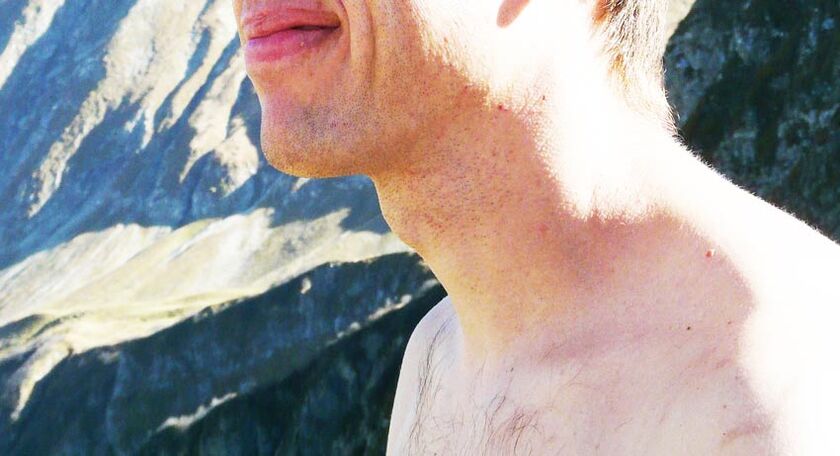
Osteocondrosis of cervical spine is known and studied well.Currently, most of the working population is suffering from this disease.This type of osteochondrosis develops not only in the adult population, but quite often in young people, the so -called young osteochondrosis.
The Cervical Department is the most mobile part of the spine, so the load on this department is quite large.The disease develops gradually, it is characterized by frequent worsening, which can lead to a significant decrease in the quality of the patient's life.
The causes of the disease
The causes of the disease are usually more and can depend on the patient's age.We highlight the most frequent:
- Violation of Calcium phosphorus exchange of any etiology;
- Different traumatic back injuries;
- Non -Balanced load on the spine (hypodynamia or vice versa impact of improved load);
- Diseases of the Cardiovascular System;
- Congenital malformations of the spine;
- Change of attitude, including by a scholiotic type;
- circulatory disorders leading to a deterioration of the force of the intervertebral disk;
- Age -related dystrophic violations of bone tissue.
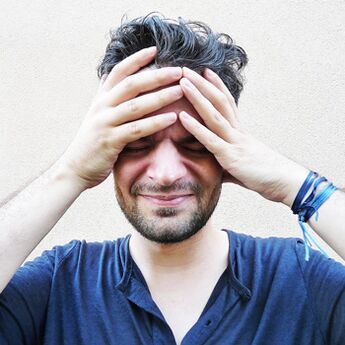
In adolescence, the main causes of the development of the disease are trauma, not balanced physical activity (training process).In elderly patients, the main cause is a long usual position under labor activity, a violation of the hormonal background.
Further disposing factors in the development of the disease may be:
- Heredity;
- Hypothermia;
- bad or not completely treated worsening of osteochondrosis;
- Stress situations and overtime.
Osteochondrosis develops gradually.A person who is constantly playing sports may not guess what is subject to this disease.
Most of all, this condition is found in people over twenty years old.Osteochondrosis of cervical spine is characterized by the fact that the process develops from the top sections.However, if you do not receive medical treatment, the process can gradually affect the lower segments in the spine.
Symptoms of osteocondrosis of the cervical ridge in adults and children
As the disease develops for years, the process is in many cases asymptomatic.Sometimes it happens that the original signs of the disease according to radiological images can be determined, while the complaints will actively be absent.It must be remembered that the older the patient, the more different complaints he will present.
The main complaints with cervical osteocondrosis are:
- Frequent headaches and dizziness;
- numbness at fingertips and weakness in the hands;
- Vegetative manifestations;
- rising blood pressure;
- discomfort for movements in the neck;
- constant sore or burning pain along the spine;
- Frequent myosites of the neck muscles;
- changes in attitude;
- Limitations in the main movements;
- In addition, a forced position of the head can develop;
- noise in the ears;
- weather dependence;
- Crunch in the neck when performing movements;
- Sleep overgrowth.
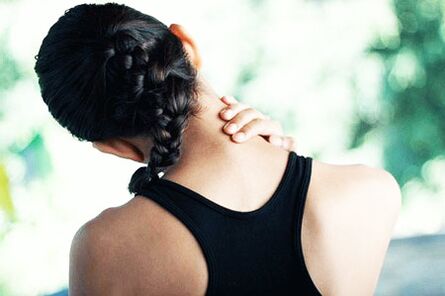
These are the most commonly expressed symptoms that the patient can present.Unfortunately, the process can begin to develop from youth and young people will present such complaints.
More often, these symptoms are manifested together.Osteocondrosis of cervical spine continues with the episodes of worsening and remission.This is due to the effect of provocative factors on the body.We must not forget that if a similar diagnosis is made, restoration therapy and rehabilitation course must be performed every six months to avoid an emergency period.
Given that the main cause of the development of the disease is reduced by trophy by the intervertebral disk and the lack of adequate therapy, the process can end in the formation of intervertebral hernia.
Complaints and clinical image of the disease - photo
Vascular manifestations in the form of dizziness or headache are intensified when performing elemental motor tasks (pouring or turning the head).Overall of all complaints, the patient is further trying to take a forced position to reduce symptoms, which aggravates nutrition of the intervertebral disk.
It is these complaints that most often encourage the patient to see a doctor.If you do not perform treatment, complaints will intensify and have a more persistent character, that is, they will not pass on their own.
Pain with cervical osteocondrosis, usually, constant, sore, burning character.The disease can be accompanied by periodic "bastards", which are provided by sharp movements.
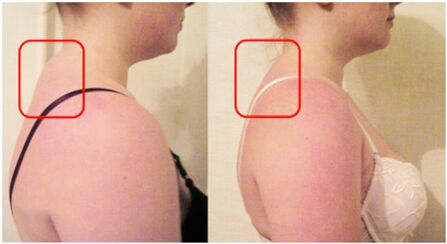
An increase in blood pressure on the basis of osteochondrosis encourages the patient to be examined by the therapist.If you do not perform competent treatment in a timely way, an increase in blood pressure will become constant, contributing to the development of secondary hypertension.In these situations, a correct overall story is of great importance.
When the process is located in the cervical region, unpleasant sensations help spread over the posterior surface of the neck, the constant tension in the bone muscle system helps to limit the movements and the formation of the forced position of the head.
Pain with cervical osteocondrosis is accompanied by reduced sensitivity.Due to constant discomfort, the muscle roll is gradually formed in the shoulder, the patient is uncomfortable in this area.
In addition to constant discomfort, the patient may experience a sharp, shooting pain in the neck.The occurrence of such complaints suggests that the patient has to give complete rest to reduce pain.In some cases, the pain is so severe that a person cannot perform the simplest actions (turn your head, take a deep breath, the back).In all cases, the patient should examine the doctor and confirm the diagnosis of osteochondrosis.
Changing the hormonal background also plays a significant role in the development of cervical disease.Therefore, competently chosen physical activity will reduce general clinical symptoms and relieve the patient's condition.Due to the fact that the pain in the neck is constantly concerned, a secondary sleep disorder occurs.It is difficult for a person to take a practical position in bed, concerns, leading to psycho-emotional stress.
In addition, the patient is aware of the sensitivity.Describe them as "goosebumps" that are felt at hand.In some cases, unpleasant sensations can be located throughout the hand, muscle strength decreases.
Diagnosis of the disease
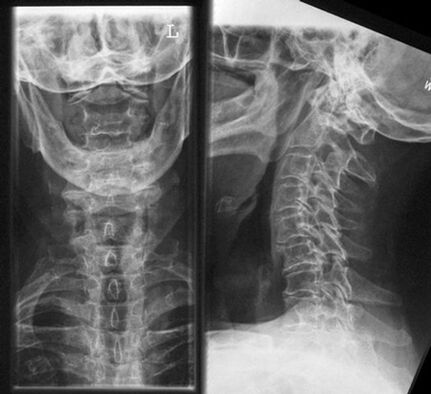
It is quite difficult to make a diagnosis based on a study.Basically, the following goals are performed to clarify the diagnosis:
- Thorough collection of complaints;
- Consultations of specialized specialists (cardiologist, endocrinologist, neurologist);
- X -Ray examination of cervical spine;
- Magnetic resonance tomography.
Inspections of specialized doctors are needed to exclude the emergency conditions for the cardiological profile and others.With the exclusion of acute somatic pathology we can talk about the diagnosis of osteochondrosis.In addition to general clinical manifestations, the diagnosis can be confirmed using an X -ray examination of the spine.
X -Ray is the most affordable and easily ongoing study that helps establish a diagnosis.In the picture you can see the narrowing of the room between the vertebrae, indicating the dystrophy on the intervertebral disk.Along the edges of the vertebrae, bones can be distinguished.If osteocondrosis is complicated by instability in the cervical region, the X -ray can be noted by displacement of the vertebrae relative to each other.
Osteocondrosis of cervical spine is a disease that can radiologically show which area is most damaged.Even when examining a cervical segment, you can see that the process is not even common.
In particularly complex cases, magnetic resonance is performed tomography, which helps diagnose the complication of osteocondrosis intervertebral hernia.Thanks to the layer -by -layer image of MRI, even the most minimal hernias and immediately indicates the level of damage.
Treatment of osteocondrosis of cervical spine
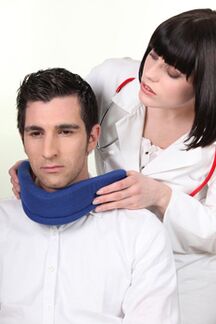
Only a doctor knows how to treat cervical osteocondrosis in an emergency and internet period.Therapy prescribed for this condition must be complex.When exacerbating the disease, it includes:
- medicine;
- Complex Recycling Therapy (Physical Therapy Exercises, Gymnastics, Massage, Acupuncture, Manual Therapy);
- Physiotherapy (Elekrophoresis, UHF, Magnetotherapy, Laser Therapy);
To prevent worsening of osteochondrosis, they go to:
- Sanatorium-Resort treatment;
- folk medicine;
- Wearing special bandages and corsets;
- Change in lifestyle (weight loss, balanced physical activity).
Medicines for the treatment of osteocondrosis of cervical spine are as follows:
- Anti -inflammatory drugs;
- drugs that improve blood circulation;
- Vitamin Complexes;
- In emergency situations with painkillers;
- Means to reduce muscle tension.
In addition to pills and injections, creams, ointments and gels are actively prescribed, applied to the affected area.After their influence, they contribute to the irritation of the skin in a particular area, which improves blood circulation in small vessels, thereby ensuring the supply of nutrients to damaged segments and muscle tension decreases.

After an emergency period, physiotherapy, massage and physical therapy exercises are signed.Restorative therapy is an addition to the most important drug treatment.As the condition will improve, the power and tropical house on the intervertebral disk will also be better.
Based on the treatment, the patient will notice an improvement in well -being, an increase in performance and mood.If the treatment is stopped without ending, the worsening of osteochondrosis will often be passed.
The rehabilitologist tells how to treat cervical osteocondrosis during the recovery period.Before talking about a complex of restorative therapy, it should be noted that any treatment must be accompanied by a correction of sleeping accessories.These include orthopedic mattresses and pillows.
Experts also recommend that you constantly carry a Chanstz collar or for a specified period of time.This method is especially widely used in children's practice when patients dress it up in homework.Shanz collar is selected individually in orthopedic salons.
The orthopedic cushion for cervical osteocondrosis is chosen for each patient.It must be suitable for the size of the bed and chosen depending on the patient's constitution.It should not be very small or very large, the main guideline is the width of the person's shoulders.
A pillow for long sleep and rest should be of medium stiffness and look like a square or rectangle in shape.Pillows of another form are suitable for a short rest.Depending on the activity of the degenerative process, the orthopedic cushion for cervical osteocondrosis should be changed.
Exercises and gymnastics (training therapy)

Restorative therapy must be attributed to gymnastics.The most important task of exercises is to strengthen the muscles of the neck and back, the top shoulder band, improve the spine and elimination of muscle clamps.In addition, the exercises for cervical osteocondrosis affect deeply placed muscles.
As a result of gymnastics with cervical osteocondrosis, physiological bends are gradually recovered and the load on the intervertebral discs is reduced.We must not forget that exercises for cervical osteochondrosis should also catch the breast segments.
Gymnastics for cervical osteocondrosis is performed with an instructor.It helps patients understand which areas to focus on.The load and volume of tasks are selected individually and it depends:
- from the age of the patient;
- from the spread of the process;
- from the availability of additional simultaneous diseases;
- From the effectiveness of drug therapy.
First, simple and non -complex tasks are performed as the body begins to adapt to new conditions and the muscles perform its work in sufficient volume, the exercises are complicated and classes duration increases.
LFK to cervical osteocondrosis includes simple actions.These tilts the head forward and backwards, gradually adding circular movements of the head.It should be remembered that even for medical physical exercise can be contraindications.As a rule, the complex of a lesson tasks that aims to develop and influence all segments of the spine.
After exercises in the cervical region, they gradually add tasks to improve the chest of the chest and lumbar.Media physical training for cervical osteocondrosis can be performed in a standing or sitting position.The tasks are performed, at a short pace, this allows for adding to respiratory gymnastics.
Contraindications to Physiotherapy Exercises:
- Acute pain syndrome;
- rising blood pressure and the presence of heart pathology in the acute phase;
- violations of coordination and disease of the vestibular apparatus;
- fever;
- worsening of another chronic pathology;
- condition after surgical treatment.
Exercises on special equipment
This technique is based on a phase restoration of the normal activity of the bone muscle system.Gymnastics exercises performed on a specialized simulator allow you to gradually recover the work of cervical spine structures.
First, pain is relieved, then blood circulation is restored, muscle tension is removed, and classes are performed to extend motor activity in the cervical region.The method is also supported by massage courses, classes in the pool.

Massage for osteocondrosis of the cervical spine
In addition to general strengthening classes, a very good effect gives massage.Massage for cervical osteocondrosis can be used by different (classic, segmental, point).In some cases, a combination of different techniques in a session is allowed.
We must not forget that massage with cervical osteocondrosis is performed on a fixed surface, with the front down, and its duration may vary from ten sessions or more.The frequency of the repetition of the course is also determined by the participating physician.Massage efficiency will last longer if the patient sleeps on a well -selected cushion.
Physiotherapeutic procedures such as a magnet or electrophoresis have a local irritating effect.Magnetotherapy is a painless procedure that is well tolerated by adults and children.Manipulation lasts several minutes, the patient should be movable, therefore older patients are most often recommended.
Electrophoresis is a manipulation performed using a special device.During the procedure, the patient feels a slight tingling created using currents.The frequency and impulsivity of the signal for each age are its own. Using this technique, the introduction of a drug is performed which has a positive effect.This manipulation is more aggressive in comparison to magnetotherapy, therefore there should be strict indications of its implementation.
Using this technique, the introduction of a drug is performed which has a positive effect.This manipulation is more aggressive in comparison to magnetotherapy, therefore there should be strict indications of its implementation.
A balanced diet is of great importance in this disease.Patients are recommended to eat fruits, vegetables, meat, greens, fish.The consumption of salt and all kinds of spices, spices, smoked or fried products, sugar must be limited.It is better to drink plant decoctions and tea, it is advisable to avoid the use of coffee and alcohol.
The use of traditional medicine is aimed at reducing pain.Most often, compressions and mixtures that are overlaid in the injury area are used.Success in the treatment of osteocondrosis of cervical spine depends largely on the patient's consciousness.Don't throw classes and therapy as soon as you felt better.It is irrational to constantly use painkillers that bring temporary relief and the disease itself is not treated.



























